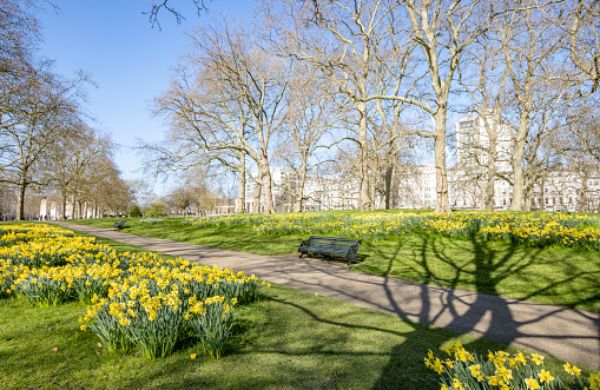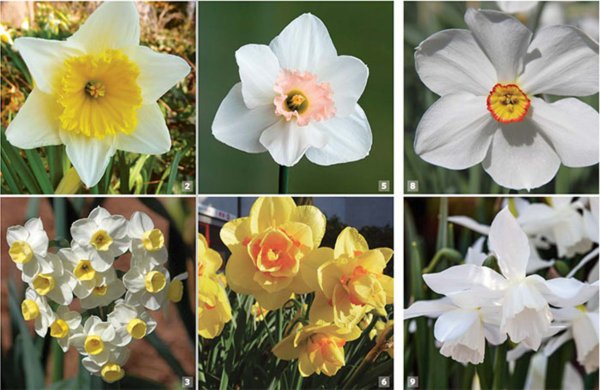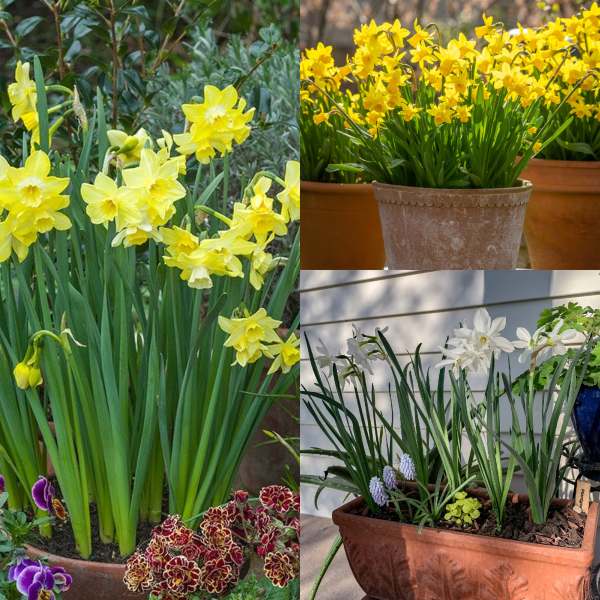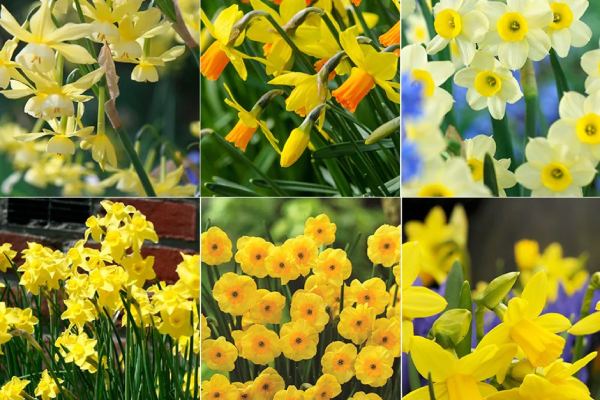Daffodils, which belong to the Narcissus genus, are sturdy plants that bring a flash of color to your garden every spring. These are perennial flowers that bloom all year. It produces flowers on a long green stalk that usually bends downwards, but occasionally faces upwards. Also, it has a green leaf that grows from the base of the stem.
Daffodil is the national flower of Wales where it is called Cennin Pedr. In addition to its beauty, daffodil is a favorite plant among flower enthusiasts and gardeners because of its adaptability and ease of cultivation.
What month is best for planting daffodil bulbs?
The ideal time to plant daffodil bulbs is usually in autumn, from September to early December. While most daffodils typically bloom during mid-spring, some of them bloom from early to late spring, depending on the type of daffodil you’re planting and the location where you’re planting it.
Many gardening experts recommend planting daffodil bulbs in September or October, as these months provide the perfect atmosphere for root development before winter.
The temperature during this period helps the bulbs establish themselves, ensuring a vibrant display of daffodil flowers once spring arrives. Sowing daffodil bulbs before the first hard frost can give them enough time to root and flourish.

A step-by-step guide for planting daffodil bulbs
To ensure your daffodil bulbs thrive and bloom beautifully, it’s important to follow a step-by-step guide.
- Select your Bulbs: First and foremost, you must select firm, high-quality bulbs free from damage or ailment. Larger bulbs are frequently preferable since they contain more stored energy, resulting in larger blooms.
- Pick a location: When planting daffodil bulbs, it is important to choose the right location for optimal growth. Look for an area with rich, well-draining soil that receives at least six hours of direct sunlight per day. Well-drained soil prevents bulbs from rotting.
- Prepare the soil: Before planting your daffodil bulb, it is important to prepare the soil by loosening it to a depth of about 12 to 18 inches. Composted organic matter or manure greatly enhances the condition of the soil.
- Dig proper holes: When you are ready to plant, dig holes 6 to 8 inches deep. This will provide sufficient drainage for your plants while protecting them from hard winters.
- Maintain space: Additionally, each bulb should be spaced four to five inches apart, as proper spacing is particularly needed.
- Watering: Watering is another crucial factor. Water is necessary after planting to settle the soil and promote root growth. During the first two weeks after planting, make sure the soil is evenly moist but not saturated.
- Mulch: This procedure is optional. Applying mulch to the soil improves moisture retention, controls temperature, and inhibits the growth of weeds. Similarly, if you’ve applied mulch, make sure to remove it as soon as shoots appear.
Which daffodil varieties bloom throughout the spring?

Daffodils come in various varieties, each with distinct features such as size, color, shape, and flowering period. Here’s a list of daffodil varieties that will make your garden vibrant and alive.
- Trumpet or Long Cup Daffodils: Trumpet daffodils feature a large, trumpet-shaped central cup that is longer than the outer petals. They have a single strong flower per stalk and mostly grayish-green foliage. These flowers thrive in colder areas and bloom from early to mid-spring. They tolerate both sun and shade and are broadly grown amongst grass, rock gardens, or under trees.
- Large-cupped Daffodils: This group produces a single, large flower per stem, with prominent cups of various shapes such as flat, smooth, or ruffled edges, bowl-shaped, or trumpet-like. Similarly, it can be found in a variety of colors, including white, yellow, pink, and red. Large-cupped daffodils are perennial flowers that bloom in mid-spring.
- Small-cupped Daffodils: It has a small central cup compared to large-cupped daffodils, which are usually less than one-third the length of the petals. Small-supped daffodils include Tete-a-Tete, February God, and more.
- Double Daffodils: Double daffodils appear in a variety of styles, including double petals, double coronas, or both. Its buds blossom in mid to late spring and turn out in a variety of colors, including yellow, white, peach, pink, and red. Some of the most popular double daffodils are White Lion, Tahiti, Golden Duct, and Lingerie.
- Triandrus Daffodils: Triandrus Daffodils yield medium-sized flowers per stem and bloom from mid to late spring. This group has strong fragrances. The petals on these daffodils extend outward from the bell-shaped cup.
- Cyclamineus Daffodils: This type of daffodils is characterized by small, narrow cups and reflexed petals with slightly to strongly swept-back petals. It blooms early to mid-spring and adapts both either full sun or half shade.
- Split-Corona Daffodils: These daffodils, such as Pink Charm and Sailboat, have a distinguishing appearance with a split or broken corona. It comes in a wide range of colors like yellow, pink, peach, and orange.
Exploring the miniature daffodils: Perfect picks for limited space
Miniature daffodils, unlike ordinary daffodils, can be planted firmly to produce a vibrant, overflowing display without taking up much space. They are perfect for adding color to small urban balconies and enhancing rock gardens with a whimsical touch.
One of the most significant benefits of miniature daffodils is their versatility. They can be interplanted with other small spring bulbs, such as crocuses or snowdrops, to extend the bloom season in a small area. These plants are space-efficient and low-maintenance, making them a great choice for both busy gardeners and beginners.
Here are several miniature daffodil varieties that are suitable for gardens, containers, or even indoor forcing.

- Tete-a-Tete: It is one of the most well-known miniature daffodil varieties. This flower is highly prized for its golden-yellow flowers and resilient nature. So, it is perfect for small gardens, rockeries, or pots.
- Minnow: Minnow is a delightful variety that produces multiple soft yellow blooms with a delicate smell, making it great for indoor bouquets or balcony containers.
- Thalia: Thalia is known for its pure white, fragrant flowers, which may brighten any area of the garden.
- Pippit: Pippit produced two-tone yellow flowers that create a delightful fragrance, attracting pollinators to the garden.
- Little Gem: Little Gems are excellent plants for compact spaces. Their golden-yellow blooms look stunning in borders, rockeries, and even window boxes. Plant them in bunches for a spectacular sight.
Frequently Asked Questions
1. What is Daffodil famous for?
Daffodils, which belong to the Narcissus genus, are sturdy plants that bring a flash of color to your garden every spring. In addition to its beauty, daffodil is a favorite plant among flower enthusiasts and gardeners because of its adaptability and ease of cultivation.
2. What month is daffodil Season?
While most daffodils typically bloom during mid-spring, some of them bloom from early to late spring depending on the type of daffodil you’re planting and the location where you’re planting it.
3. What are Daffodil varieties?
Daffodils come in various varieties, each with distinct features such as size, color, shape, and flowering period.
Also read, Embrace the Beauty of Spring: 10 Stunning Spring Flowers to Plant Now
